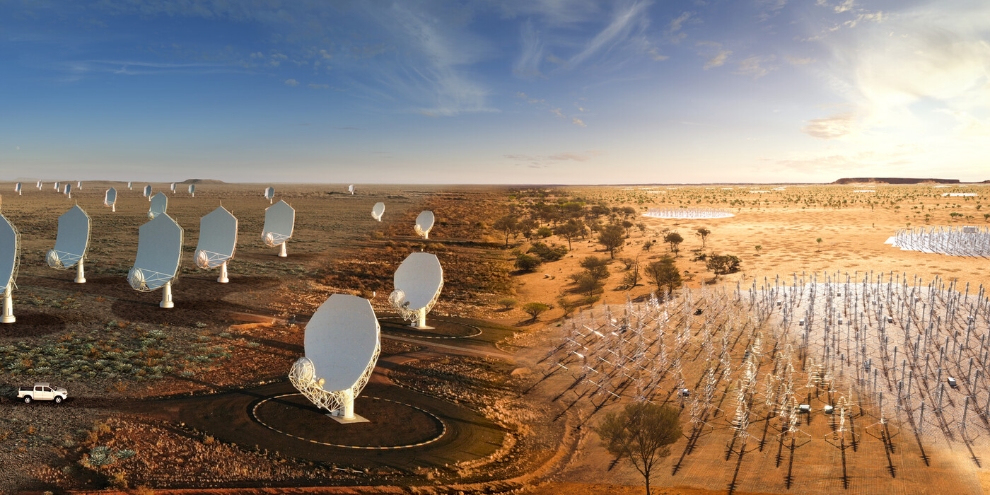The National Research Council (NRC) announced today that Canada will invest $269 million in the Square Kilometre Array Observatory (SKAO) over eight years.
Square Kilometre Array Observatory consists of two radio telescopes at radio-quiet sites in South Africa and Australia. Each radio telescope is “composed of respectively hundreds of dishes and thousands of antennas, the SKAO’s telescopes will be the two most advanced radio telescopes on Earth.”
The news is not surprising as Canada has been cooperating on the effort for twenty years and last December announced its intention to official join the international effort as its 10th member.
Other members include the United Kingdom, where the organization is headquarters, Australia, China, Italy, Netherlands, Portugal, South Africa, Spain, and Switzerland.
Mitch Davies, President, National Research Council of Canada said, “The National Research Council of Canada’s Herzberg Astronomy and Astrophysics Research Centre plays a leading role in Canada’s international partnerships supporting scientific discovery and innovation in instrumentation for the astronomy community. Our membership in the Square Kilometre Array Observatory is the result of decades of collaboration and hard work. Canada has contributed greatly to defining and designing the new observatory since the 1990s. We are now poised to play a similarly critical role in its construction and scientific use.”
Prof. Phil Diamond, SKAO Director General added, “Canada has been a valued partner within the SKA project for over 20 years, and I am delighted to welcome them as our newest member, extending the Observatory’s membership into North America. Just over a year ago at the SKA-ngVLA meeting in Vancouver, I saw firsthand the enthusiasm among astronomers in Canada, particularly early career researchers who will be using the SKA telescopes. Now we can look forward to further deepening the ties between our colleagues there and the broader SKAO community as we progress through construction and into operations in the coming years.”
The Square Kilometre Array Observatory will be the world’s largest radio astronomy observatory when completed and according to the NRC’s press release will have “an impact comparable to the James Webb Space Telescope or the Hubble Space Telescope.” Construction on phase 1 began in June 2021 and is expected to be completed by 2029.
With the investment, the government said it would “result in opportunities for Canadian industry and academic institutions to deliver key observatory systems and to ensure Canadian astronomers have access to one of the world’s leading facilities.”
To that end, MDA Space was awarded a contract today by the NRC whereby they will “support the development, construction and integration” of SKAO.
MDA Space provided more details on what their contribution will be saying, “The SKAO telescopes are made up of arrays of antennas, including hundreds of mid to high frequency antennas in South Africa and over 100,000 low-frequency antennas in Australia. As part of its contract with the NRC, MDA Space will develop the project’s Correlator Beamformer, a powerful data processing engine that will collect and process the large volumes of cosmic signals received by the telescopes. Using state-of-the art embedded computing technologies designed by MDA Space in collaboration with the NRC, the signals will be processed thousands of times faster than average computer download speeds, giving scientists rapid access to vast quantities of new data and insight about the universe.”
Mike Greenley, CEO of MDA Space said of the contract, “MDA Space is proud to be contributing to this important international scientific endeavour that will listen and look out into space to expand our understanding of the universe. Projects of this size, scope and significance present a unique opportunity to showcase the expertise and innovation of Canadian astronomers, astrophysicists and industry while driving new discoveries and advancements in science and technology.”
Construction on phase 1 began in June 2021 and is expected to be completed by 2029.




